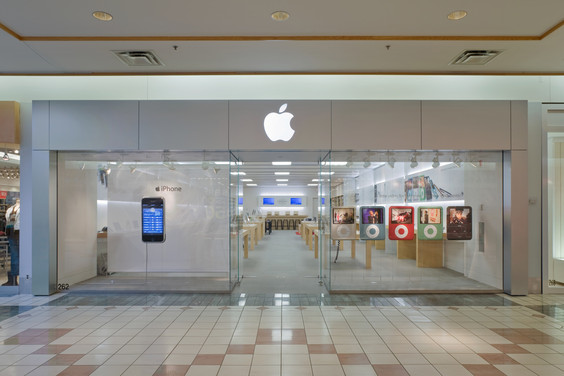It isn’t hard to find bad news about malls – in our (small) local mall, the Deb, Pac Sun, Gap, Radio Shack and a few small stores are all closing. Even the bigger anchor stores such as Macy’s, Sears and JC Penny are seeing pressure from online sales that lower traffic, also hurting smaller stores. Only exception? Apple stores.

It should not come as a surprise that the rent paid by mall occupants is not a fixed ‘per square foot’ number, but is instead based upon the more complex considerations including the sales generated by the store (the mall gets a cut) and the general traffic brought in by the store.
According to a report at the Wall Street Journal:
Apple draws so many shoppers that its stores single-handedly lift sales by 10% at the malls in which they operate, according to Green Street Advisors, a real-estate research firm. That gives Apple the clout to negotiate extremely low rents for itself relative to its sales, while creating upward pressure on prices paid by mall neighbors who might not benefit from the traffic.
What this means is that Apple is operating under an entirely different set of rules from most other stores. They not only produce intrinsic sales dollars from selling products, but just by being in a mall they make it a destination. How dramatic is that effect? As noted above, Apple’s retail stores can boost mall revenues by as much as 10%! As for the impact on the rent Apple is paying?
Apple has upended that model by using its bargaining power to pay no more than 2% of its sales a square foot in rent. That compares with a typical in-line tenant, which pays as much as 15%, according to industry executives.
And given this fact:
there are about 1,200 enclosed malls in the United States, and about one-third of them are dead or dying. That’s because developers rapidly overbuilt malls in the 20th century
That means more malls are likely lobbying Apple and offering sweet terms to draw them into opening a store in their mall. The rest of the WSJ article is worth reading, talking about how Apple accounts for a disproportionate amount of sales in some enclosed malls, rent dynamics and other stuff.
The image at the top is from the Apple Store at the Eastview Mall in Rochester NY, which at 90 minutes away is the closest store to me. Whenever we go there – or to the Destiny USA Mall in Syracuse – you can be sure we will stop into the Apple store.
What about you – what impact do you see from Apple stores over the years?